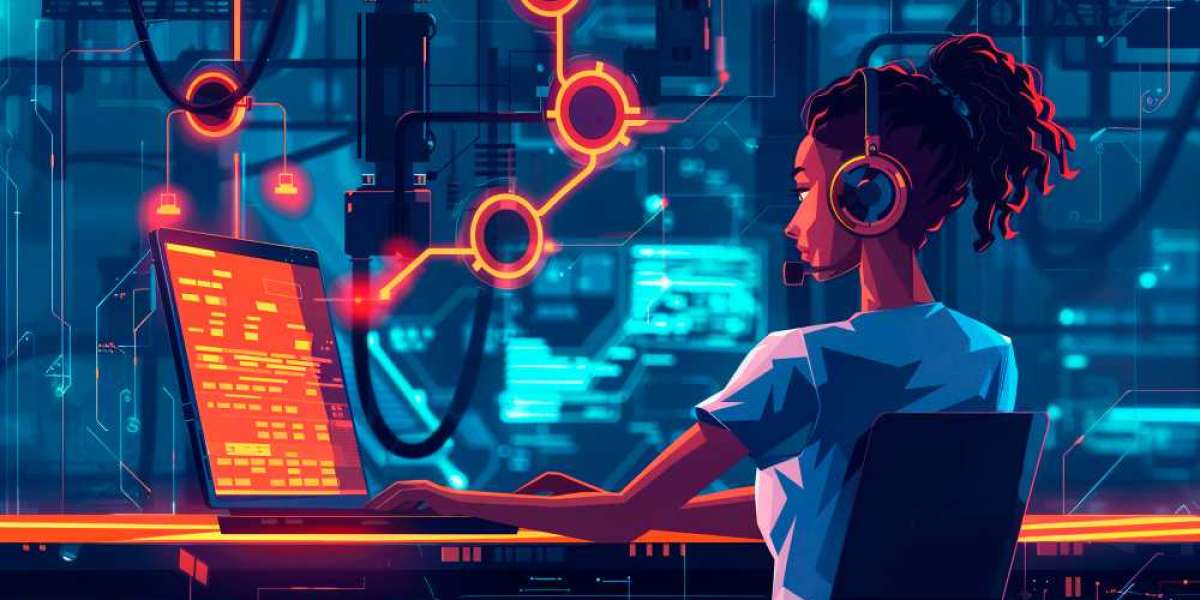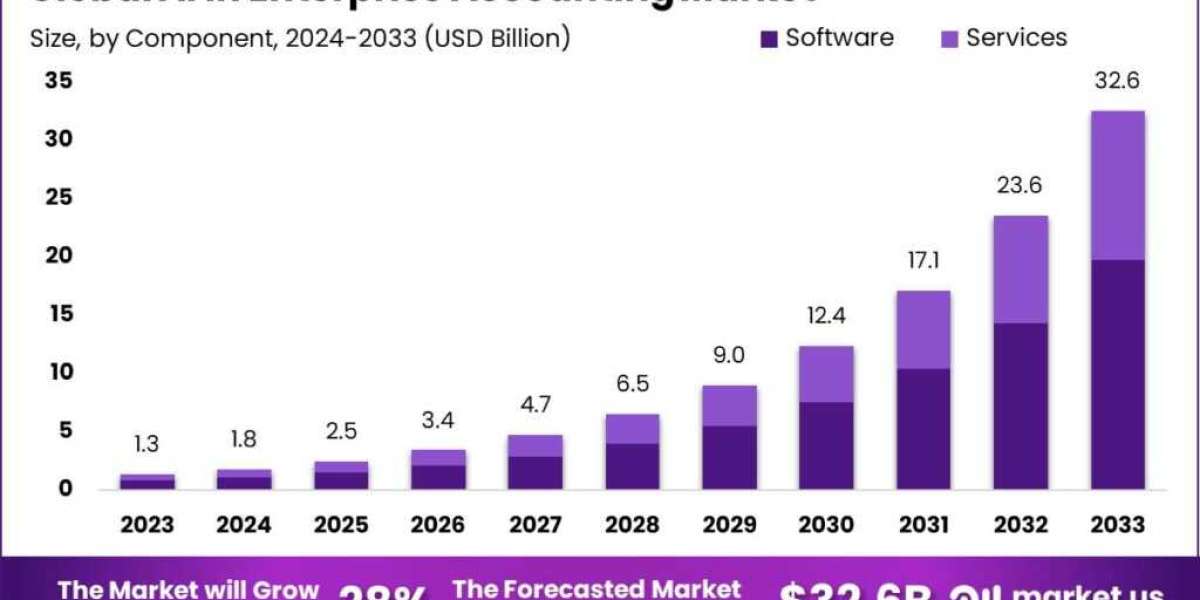Generative AI is one of the most exciting developments in the field of artificial intelligence. Unlike traditional AI systems, which are designed to analyze data and provide predictions or decisions, generative AI can create new, original content. Whether it’s producing human-like text, generating lifelike images, creating music, or even developing new software code, generative AI development is revolutionizing industries and unlocking new opportunities for innovation.
In this article, we will dive into the world of generative AI development, exploring its applications, key technologies, benefits, and the future of this rapidly evolving field. We will also discuss how companies are utilizing generative AI to transform their operations and create new products and services.
What is Generative AI Development?
Generative AI refers to artificial intelligence systems that can generate new content. These systems are trained on vast amounts of data and learn patterns, structures, and relationships within that data. Once trained, they can produce new, unique outputs that are not simply copied from the original data but are entirely original. Generative AI models can create text, images, music, videos, and even 3D models.
Generative AI development involves the creation and refinement of these systems, leveraging techniques such as machine learning, deep learning, and neural networks. Some of the most notable advancements in generative AI include models like GPT (Generative Pre-trained Transformer) and GANs (Generative Adversarial Networks).
Key Technologies Behind Generative AI Development
Several cutting-edge technologies are driving the development of generative AI systems. These technologies enable AI to produce highly sophisticated and creative outputs, pushing the boundaries of what machines can do.
1. Generative Adversarial Networks (GANs)
GANs are a fundamental technology in generative AI development. Introduced by Ian Goodfellow in 2014, GANs consist of two neural networks—a generator and a discriminator—that work together in a competitive process. The generator creates new data, while the discriminator evaluates the data and provides feedback. This process helps the generator improve its outputs over time, leading to the creation of highly realistic images, videos, and other types of content.
GANs have been widely used in industries like entertainment, art, and fashion for generating realistic visuals and in scientific research for creating synthetic datasets.
2. Transformer Models (e.g., GPT)
Transformer models like GPT (Generative Pre-trained Transformer) have revolutionized natural language processing (NLP). These models are designed to understand and generate human-like text. GPT models are trained on massive datasets and can generate coherent and contextually relevant text based on input prompts.
Generative AI development using transformer models is particularly impactful in industries like content creation, customer service, and marketing, where AI-generated text can be used to write articles, generate reports, or assist with customer interactions through chatbots.
3. Variational Autoencoders (VAEs)
VAEs are another key technology used in generative AI development. These models learn to encode input data into a lower-dimensional representation and then decode it to generate new data. VAEs are widely used in generating new images, speech, and other types of complex data.
VAEs are particularly effective in generating smooth, continuous variations of data, making them useful in industries like healthcare (e.g., generating medical images) and design (e.g., generating new product designs).
4. Deep Learning Frameworks
Generative AI development relies heavily on deep learning frameworks like TensorFlow and PyTorch. These frameworks provide the tools and infrastructure needed to build, train, and deploy complex neural networks capable of generating high-quality outputs. They also offer scalability, allowing generative AI systems to be trained on large datasets and deployed across industries.
5. Reinforcement Learning
In some cases, generative AI development can involve reinforcement learning, where an AI model learns by interacting with an environment and receiving feedback. This approach is useful in areas like game design, where AI can generate new levels, characters, or scenarios based on player interactions.
Applications of Generative AI Development
Generative AI development is reshaping industries across the globe, offering innovative solutions to challenges that require creativity, personalization, and automation. Here are some of the most impactful applications of generative AI:
1. Content Creation
One of the most popular applications of generative AI is content creation. Generative AI can produce text, images, videos, and even music that is indistinguishable from content created by humans. This is especially useful in industries like marketing and entertainment, where personalized and engaging content is crucial.
For example, companies can use AI-generated text to write blog posts, product descriptions, or social media content, while AI-generated images can be used in advertising campaigns. The ability to generate high-quality content at scale helps businesses save time and resources while maintaining creativity.
2. Synthetic Data Generation
Generative AI is also being used to create synthetic data for machine learning models. In industries like healthcare and finance, access to large amounts of data is often restricted due to privacy concerns. Generative AI can create synthetic datasets that mirror real-world data while preserving privacy.
For example, in healthcare, generative AI can generate synthetic medical images that can be used to train diagnostic models without exposing sensitive patient data. In finance, AI-generated data can be used to simulate market conditions or assess risks.
3. Healthcare and Drug Discovery
Generative AI is playing a significant role in healthcare, particularly in drug discovery. AI models can generate molecular structures and simulate their interactions with biological targets, helping researchers identify potential new drugs more quickly and efficiently. This accelerates the drug discovery process and reduces the cost of bringing new treatments to market.
Additionally, generative AI can analyze medical images and assist in diagnosing diseases by generating reports based on patterns it has learned from vast datasets of medical records.
4. Creative Arts and Design
In the creative arts, generative AI is enabling artists and designers to collaborate with machines in new and exciting ways. AI-generated art, music, and design are becoming increasingly popular, with AI tools like DALL·E and DeepArt generating unique works of art.
Generative AI is also being used in industries like fashion, where AI can generate new clothing designs based on trends and customer preferences. In architecture and product design, AI can create optimized structures and products that meet specific criteria.
5. Gaming and Entertainment
The gaming industry is another area where generative AI development is having a significant impact. AI-generated content in games—such as new levels, characters, or storylines—enhances the player experience by providing endless possibilities and personalized gameplay. Generative AI can also be used to create realistic virtual environments and NPC (non-player character) behavior, making games more immersive.
In the film and television industry, generative AI is used to create special effects, generate scripts, and even animate characters, reducing production time and costs.
Benefits of Generative AI Development
Generative AI development offers numerous benefits to businesses, including:
- Increased Efficiency: Generative AI can automate repetitive and time-consuming tasks, allowing businesses to focus on more strategic activities.
- Cost Savings: By automating content creation, data generation, and design processes, companies can reduce the cost of hiring human labor.
- Scalability: Generative AI models can produce high-quality outputs at scale, making them ideal for businesses that need to generate large amounts of content or data.
- Creativity and Innovation: Generative AI systems can create entirely new ideas, designs, and products, pushing the boundaries of human creativity and driving innovation.
- Personalization: AI-generated content can be tailored to individual customer preferences, improving engagement and satisfaction.
Future Trends in Generative AI Development
As generative AI continues to evolve, several key trends are shaping its future:
- AI-Augmented Creativity: Rather than replacing human creativity, generative AI will increasingly be used to augment it. Artists, writers, and designers will collaborate with AI to generate new ideas and enhance their creative processes.
- Ethical AI Development: With the rise of deepfakes and other AI-generated content, ethical concerns are becoming more prominent. Companies will need to prioritize transparency, fairness, and accountability in their generative AI systems.
- AI-Generated Products and Services: As generative AI becomes more sophisticated, we will see the emergence of entirely AI-generated products and services, from personalized fashion to AI-created music albums.
- Generative AI for Sustainability: AI-generated simulations and models can be used to address global challenges like climate change, helping businesses develop sustainable solutions and optimize resource use.
Conclusion
Generative AI development is transforming industries and opening new opportunities for creativity, innovation, and efficiency. With its ability to generate content, data, and designs, generative AI is becoming an essential tool for businesses across the globe. As the technology continues to evolve, we can expect even more groundbreaking applications to emerge, pushing the boundaries of what artificial intelligence can achieve.
FAQs
1. What is generative AI? Generative AI refers to AI systems that can create new content, such as text, images, videos, and music, based on patterns in input data.
2. What are the key technologies behind generative AI development? Key technologies include GANs, transformer models like GPT, VAEs, deep learning frameworks, and reinforcement learning.
3. How is generative AI used in industries? Generative AI is used in content creation, healthcare, drug discovery, synthetic data generation, creative arts, design, gaming, and entertainment.
4. What are the benefits of generative AI? Benefits include increased efficiency, cost savings, scalability, enhanced creativity, and the ability to personalize content.
5. What is the future of generative AI? The future includes AI-augmented creativity, ethical AI development, AI-generated products, and the use of generative AI for sustainability initiatives.














